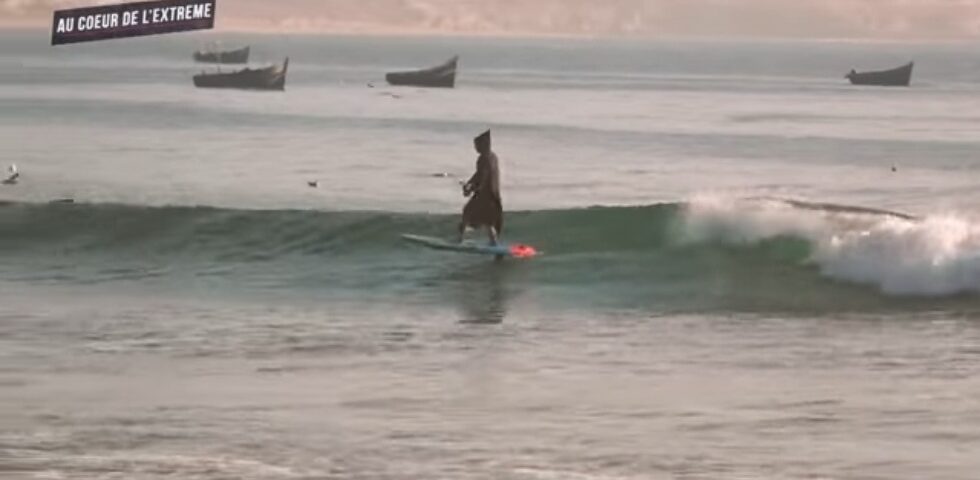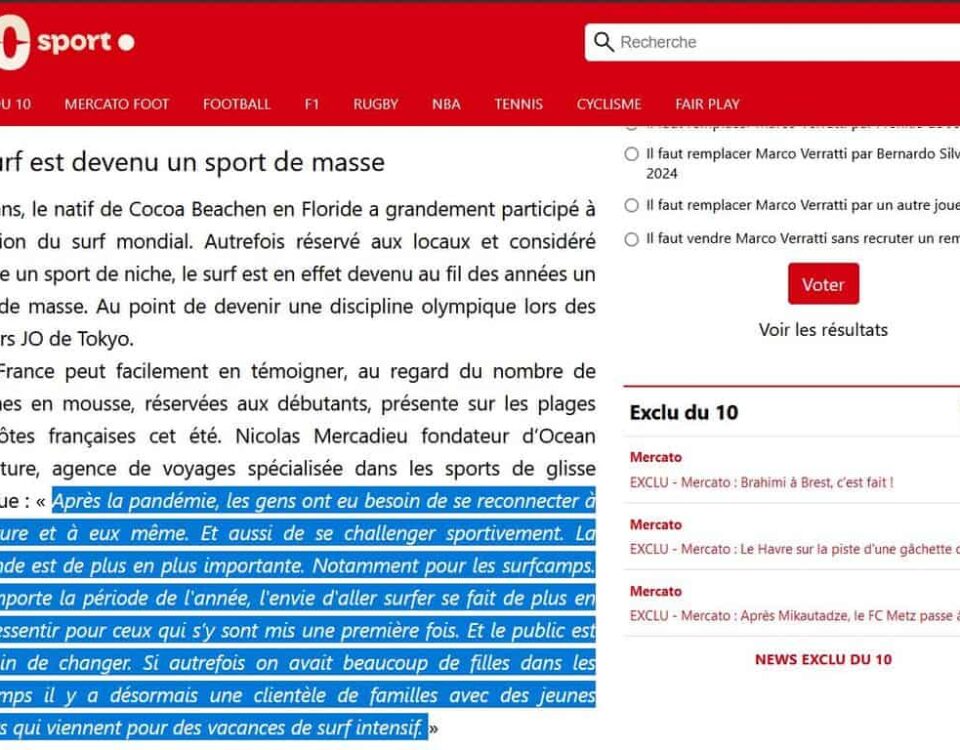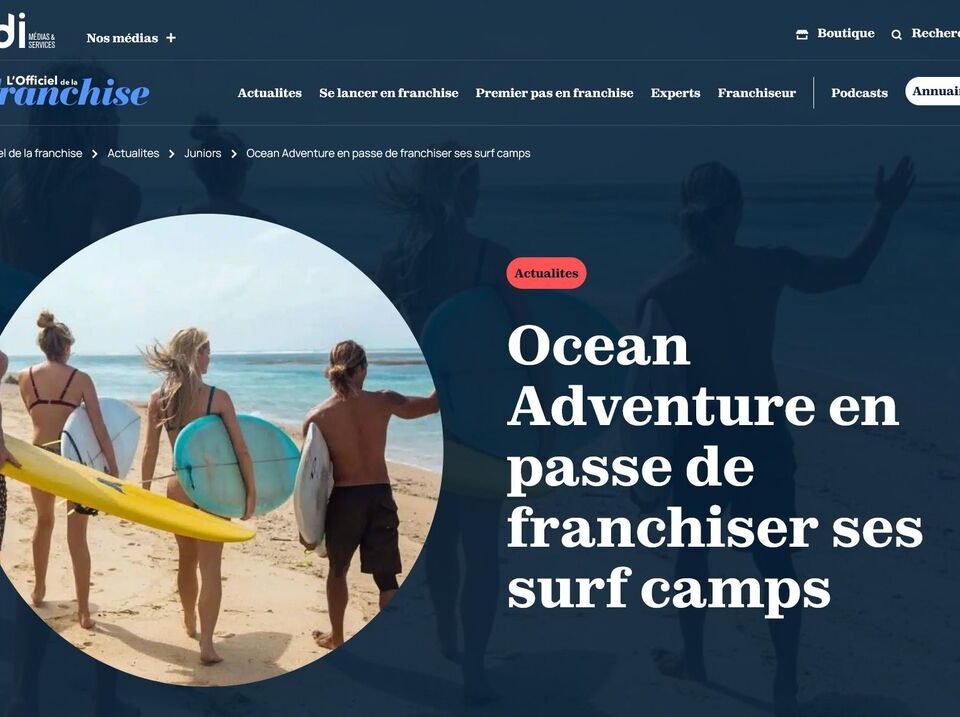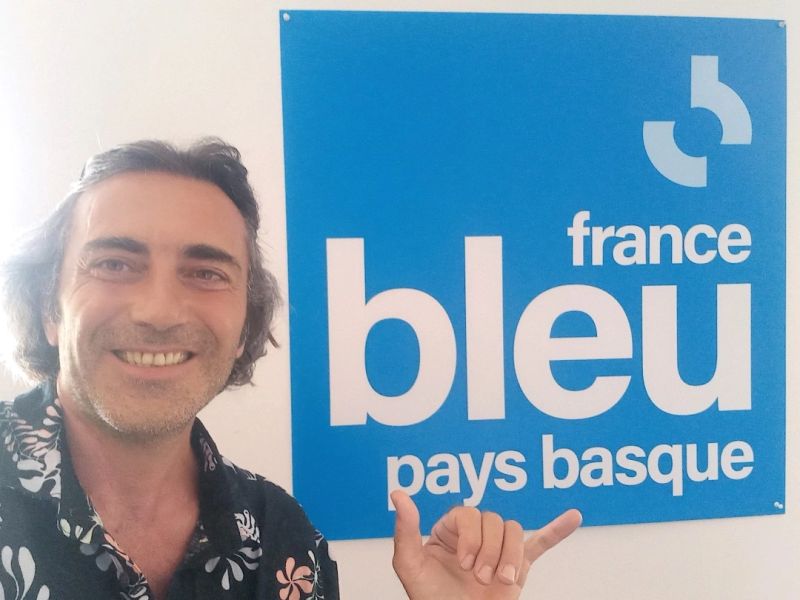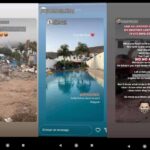
Destruction of surf camps without planning permission in Morocco: Taghazout, Imsouane
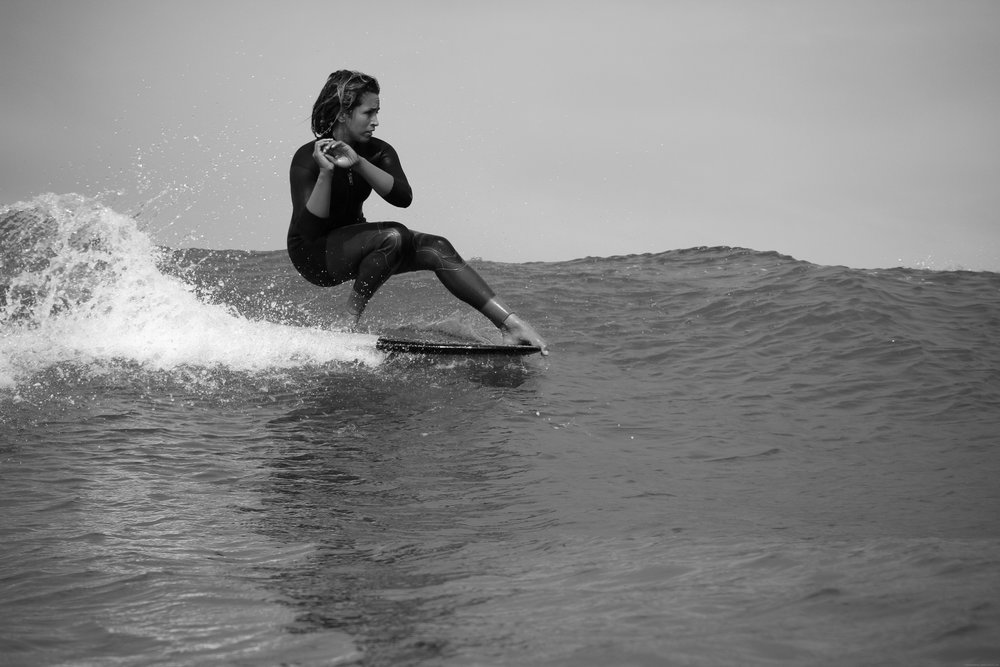
Surfing is a poem
Hello everyone, welcome to the heart of the extreme, just to get away from the dullness and monotony that may have overtaken you with the onset of winter in our grey European cities. I’m taking you here to Africa, to Morocco to be precise. And more specifically to Imsouane, to meet one of the longest waves on the planet. This is “the right” of Imsouane Bay, which is right next to me. And to do so, we’re going to crash the surf trip of the Carpentier brothers, three young people from Brittany who have come to scour this very part of Morocco.
We have a first wave, it’s the cathedral, it’s a bit of a big break and a left at high tide on a small reef, there we have a slab at the tip. Maybe the tide will be a bit too low, but as we go up it’s going to be incredible.
Contenus de la page
Imsouane Bay
Just over there is Imsouane Bay, which is a wave about 1 km long that should be really nice. Just now the wind was mixing in a bit, but it should ease off and it should be cool. I think this morning it’s going to be this option.
The first time we came here was ten years ago, not necessarily to tour the country again, and after a week of travelling we ended up here in Imsouane. We arrived at a hostel, rented boards and then started surfing.
Making progress with incredible waves
We realised that the waves were incredible and so we decided that every year at least, spending two weeks here would be great. We just had to do it, to see the change of scenery and to have incredible waves right next door, to be able to surf 2 or 3 times a day, which also allowed us to make a lot of progress in a fortnight, which is amazing, given the quality of the waves. Even today, you don’t progress as quickly, of course, but after two weeks in Morocco, you can still feel that you’ve learnt things, and that’s really interesting. But it’s changed enormously, it’s built on everything. When we first arrived, there were two inns there, whose clientele was made up of waiters. Now I’d say there are at least twenty. The village has grown a lot too, so it’s really nice.
Sidi Ifni
We also did Sidi Ifni, a little further south, with superb waves too, but there are far fewer people than here, and then we did the Western Sahara, including Dakhla, where there’s no-one, though. When we landed in Agadir, it was a two-day journey by car. It’s a bit of a sport, but it’s totally worth it, and we’ll be going back to dakhla.
Honestly, it’s more than promising, there’s a straight line that runs along a point that’s two metres long. It’s bigger than the surfer and it’s promising, now we’ll just have to see what happens.
We’re taking a break between two resorts because here at Imsouane we’ve been gorging ourselves, or at least the Carpentiers are gorging themselves, and we’re going to take this opportunity to take stock of the competition and the career of Mr Benoît Carpentier here. How did your year go? Because it’s now December and the year has ended at full level3.
Benoît Carpentier, surfer, competitor
Yes, that’s right, so it’s a bit like two little triples with the brothers, just to round off the year. So it’s been a really top year, with a competition in Hawaii at the beginning of February, where I finished 7th, so I made the semi-finals, which is not bad at the start of the season; then I followed that up with the European Championship title with the French team in Portugal. So that was one of my biggest objectives for the year, so that’s something I’ve done. But then I arrived in Denmark for the USA world championships, again with the French team, and there I managed to reach the final, so an international final, and I finished third, so a great performance. I’ve never done two international podiums before, so it’s a great, great performance.
Are you happy? Did you also win the French Cup circuit? Yeah, so I’ve done the double again, so I’ve done the double in fact in longboard and stand up paddle, so I’ve won both circuits, so it’s the same as the year before, so that’s great too.
And how are things going at international level, the World Tour? You were telling us about it and you did a semi-final in Hawaii and that was it? In other words, there were no other events at all this year?
No, no, the professional tour had financial problems, so we only had one stage. There were three in the world which were due to take place, so there must also be New York and the Canaries, so that’s why I’m going to the Canaries afterwards. I’d already booked my tickets and found some really cheap ones, so I thought: well, why not? In the worst case scenario, if there’s no competition, I could still take pictures with the brothers and enjoy.
But how do you manage that? Because, if stand-up paddling isn’t already the most publicised discipline, if on top of that, internally within the World Tour, you have less competition, or at least competitions that have been planned and cancelled. How do you change your approach? Does doing trips and making images like that keep you in the media, please the sponsors and fill up your year?
I’m really trying to do trips and make little videos and post them, stay active on social networks, show a bit of the adventure side that sub-surfing takes me on.
And yes, in the end it’s not a bad idea to replace competitions with family free surf sessions. Personally, I prefer it! And it makes you travel, it makes you discover new places, so yes, it’s great, and sharing it with the brothers who have a bit of time this year is good too.
Sponsors of Benoit Carpentier
I saw on this trip that you were followed by Josh, an American film-maker, so what did Josh come to do with you? Josh is actually someone who works for Starboard, one of my board sponsors, and so he volunteered to come to Morocco and make a little video about me, do a little report on this spot that I know so well, I’ve been coming here for ten years, so do a little story.
So you’re basically going to follow the brothers, which is what I’m going to do, but from a completely different angle and with a lot less of me in it? Yeah, that’s it! From my point of view it might be a bit less good, but I think he’s a guy who does a really good job. I noticed that you don’t travel light, because I saw in your board set that it ranges from bodyboarding to sub foil via longboarding and classic sup. Yes, it’s true that it’s heavy, it’s three 32 kg board bags, so it’s a bit of a burden in terms of excess luggage, but you need lots and lots of accessories to have fun in all kinds of conditions, you never know what you’re going to come across, so it’s good to have everything on the day. And here I’ve seen you doing a lot of supfoil, is that something you’re trying to develop? Why do you do that rather than the classic stand-up paddle? What attracts you to it? In fact it’s something I’ve been discovering for a while, so I’ve got friends in Hawaii, when I was there at the beginning of February who were really starting to get into it, in fact to really get into it and I managed to get boards with a starboard and a foil, in partnership with Gofoil and so here we are, I’ve just received the boards just before coming here to Imsouane.
I’d always dreamed of being able to foil this wave because it’s a kilometre long, it’s magnificent, it has incredible potential and so it was incredible to surf this wave right here, to be able to surf the wave on the outside compared to the others which are really on the inside. You can surf just the wave, in fact, and not get in anyone’s way and catch lots of waves and the sensation of speed is just incredible.
Did you use a GPS watch to measure how far you went? So far my record has been 914 m on one wave and 2 minutes 30 of riding. That must be ultra tiring! You can’t really feel your legs at the end. Yes, because on the foil you’re always looking for balance and then pumping to get back up to speed. We really had to be on the fore and aft supports and that’s how we made sure the foil didn’t go out of the water because when it does go out of the water it’s at full speed, not good, the impact hurts quite a bit.
Listen, we’re going to do a little course sequence! Exactly, there’s a series that shifts quite a bit in terms of getting into the bay, I think that with foils there’s really a way to get away from the point where the waves are breaking and really go right into the middle of the bay just with the wave in fact, there’s a couple of good sections at the start so you can really hit the lip and everything after the wave it dies a bit and it tends to reform a bit on the insight right there and it ends up at the bottom of the bay really so it’s a really long wave. Is it a good wave for longboarding? Yes, that’s right, it’s a wave that’s well known for longboards because it’s easy to paddle up and it’s much less exhausting, but the wave tends to be quite soft. But it’s true that it’s a paradise for longboarding and even foil stand-up; I’ve just discovered that. You can even use the slab that’s right there, which normally only works at high tide. And when you see 50 guys at the peak, just waiting for their waves, they see a foil coming from the reef, fifty metres away. They look at you and go: Oh yeah: it’s pretty incredible and then they can’t say, no, we’ve got priority. And so you catch the wave 50 metres before them, so you’re in the clear.
And so I let the guys do a few laps of the water; and so every time Benoit does a lap, he still has to come back with the foil, it takes time if they have to come back with the foil and so I came across Mathieu. Mathieu, can you explain to me what you’re doing here?
A craving for grilled sardines
I’d come shopping to try and find something to eat for lunch, so I popped into Aziz’s restaurant, where they let you make grilled sardines after surfing, and it’s even better to eat seafood and local produce. And so we had the idea of eating sardines, I went by and there were no sardines in the restaurant, so I said to Aziz that I was going to go and see at the fish market, if there are any sardines I’ll bring them back to you and you can prepare them for us. Our options were sea bream, bonito or sole. So as a result we go back to the restaurant to see Aziz, and ask him what they prefer between bonito or sea bream to grill and after that I look for my dirhams and I come back to buy then I take to Aziz.
The end of the story, the sea bream and the Moroccan salad, well the little trick is that we didn’t really buy it, it was Aziz who bought it for us. We found him, he was there too. He said it was a good thing I was going to buy some for lunch. We were able to see him then, and he found us 4 beautiful sea breams, all fresh from the night’s catch. So we say thank you to Aziz.
More and more people are buying boards every year. We really hope SUP makes it to the Olympics, because if it does, there’ll be a lot more people interested. What’s great about this sport is that it’s really easy to get into if you want to give it a go. It’s very easy for women, children, those who have never surfed before…
The point of view of Josh
Josh, a director who specialises in extreme sports, particularly SUP, gives us his take on benoît. I’ve been interested in windsurfing, kitesurfing, SUP and paddle boarding for a long time and Benoît has what it takes. I also see a kind of charisma in him, which can really develop into something very interesting. But he’s very young and it shows when you’re with him, when you spend time with him, but that’s good because youth has energy and energy is important – you can’t succeed in this business in this sport if you don’t have a lot of energy, and benoît has that in spades.
And as someone who works a lot with these people, I think you must be aware of the interest that all young athletes today have in their image, in taking photos and making films, and I imagine that you’ve seen sport evolve in this respect too?
For some it’s really harder, they have to work harder, it’s also important to build a career, after that it’s important for them as an all-male athlete, that’s another thing, there are plenty who only think about riding. But if you want to have a career in extreme sports, you have to be 100% aware of that. If you want to succeed, you also have to succeed on Instagram. We’re living in an age where storytelling is universal. I tell stories, you tell stories, the guys tell stories too. We realise that for a story to be good, it has to be authentic. People are less interested in
pro surfer to inspire them or what kind of footballer he might be. No, they want to see what experience they can actually have themselves and I think that resonates a lot more. So they’re most interested in that and if the athletes can convey that it’s more interesting.
Objectif Foil en Djellaba
The djellaba is the traditional Moroccan outfit. In fact, we had an idea when we came here two years ago, I was with some mates and we thought why not go surfing in it! So I’m going to bring it back this year with the aim of doing some foiling with it. But from a practical point of view, once it’s wet, it’s going to be very heavy, bearing in mind that it’s not neoprene. I’d say it’s better not to fall off, because it’s very, very heavy, so yes, the aim is not to fall off.
It’s starting to get really dark here in Imsouane, the sun is setting, it’s almost sundown and night is falling. The guys are still in the water for one last session, as we also have between 4 and 5 sessions a day here. After each session there’s a meal. And after that, I think it’s couscous. Thank you for following us and I wish you a good session.

